What’s At Stake? Providing Support For Your Plant
Have you ever noticed your plants getting ‘top heavy’? From time to time, you may find that the weight of a plant’s canopy is causing its stem to bend.
Gardeners stake their plants for this, and other reasons. For instance, stakes also helps to prevent plants from toppling or being uprooted by a gust of wind.
A stake may provide support when you first transplant a plant into a new growing location, while the plant is producing roots that anchor it to the ground.
Although staking may seem like a simple affair, it can do more harm than good when done incorrectly. These are some pointers for effective staking:
- The basic components of staking are a pole, string and rubber tubing.
- Stakes should be made of a weatherproof material, so as to ensure durability. The stakes available for sale in garden stores are often made of bamboo, timberor metal. Some stakes are also coated with plastic.
- When driving a stake into the ground, it is important to insert it deep enough such that it stands up sturdily. The stake’s height should be slightly taller than that of your plant after being driven into the ground.
- The string used for staking should first be threaded through a short length of rubber hose. You can use airline rubber tubing, which is used in aquariums, for thinner strings. This tubing helps to prevent the string from cutting into your plant’s stem.
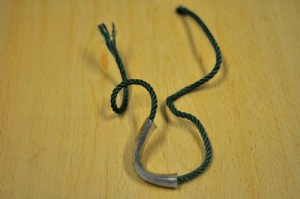
The Step-by-Step Guide to Staking
To stake your plant, first, make a loop around the fork formed between two branches. The fork will help to keep the string in place, and the loop around the stem should be a loose one. This allowance gives ample room for the stem to grow, and reduces the likelihood of the string cutting into the stem.
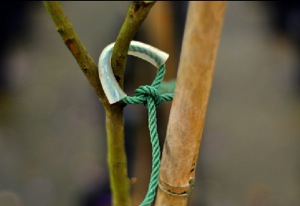
Next, tie the loop to the stake. This resulting second loop should be tight and secure, while the loop around the stem holds the plant’s stem loosely. You may want to cut away any excess string.
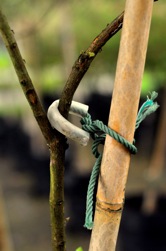
A very common mistake is to tie the stems too tightly to the stake, as illustrated below. Stems that are tied too tightly can become damaged, creating wounds that allow disease-bearing pathogens to enter. And when staked incorrectly, a stem may even snap!
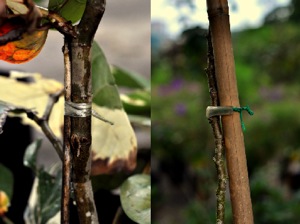
By Low Pei Jun


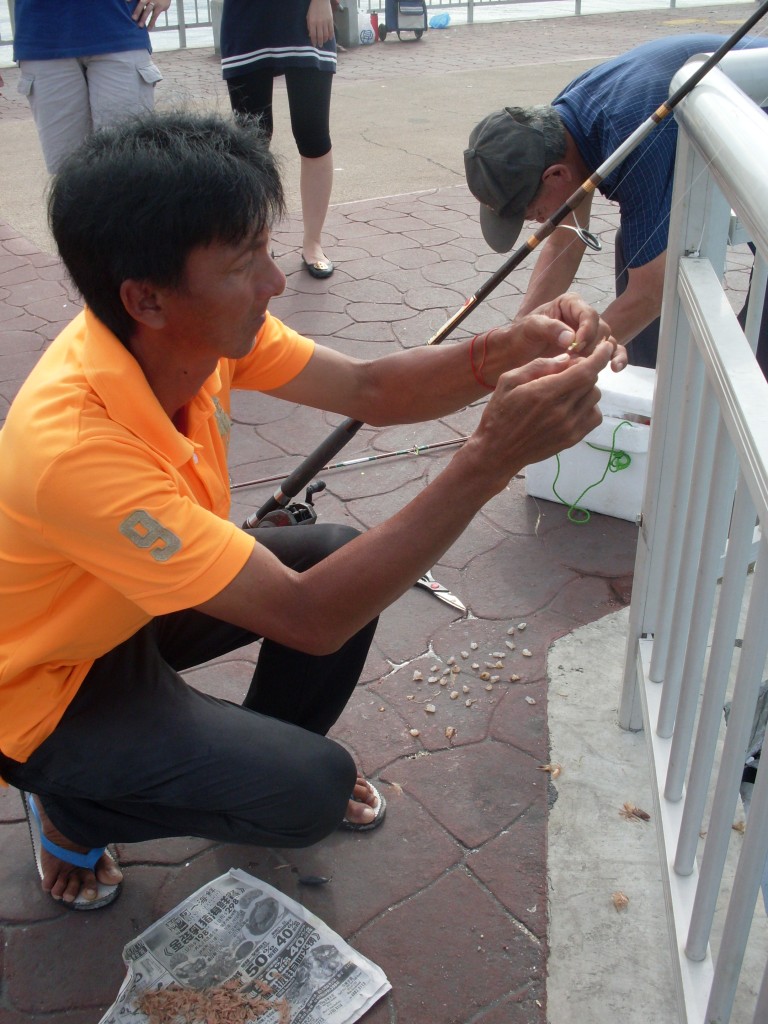

Have views or comments on this article? Let us know via this form. If you would like to give us feedback on any other areas relating to our parks and gardens, please submit via https://www.nparks.gov.sg/feedback